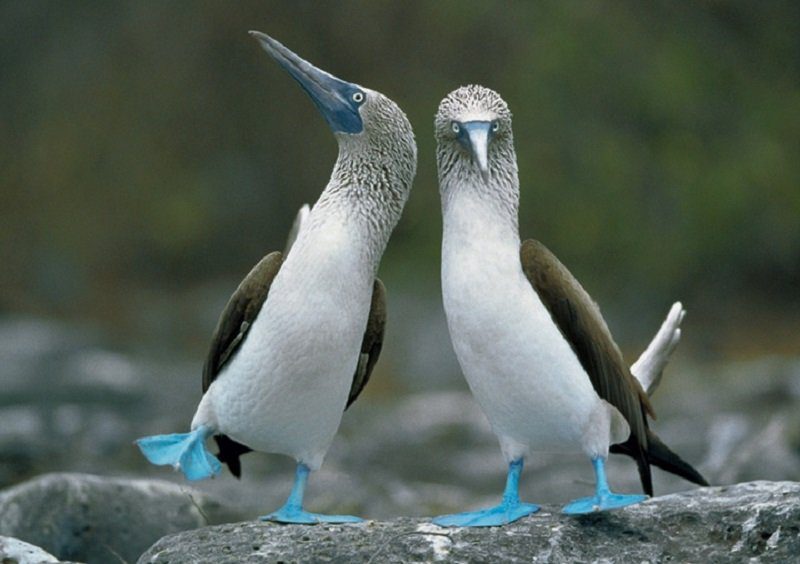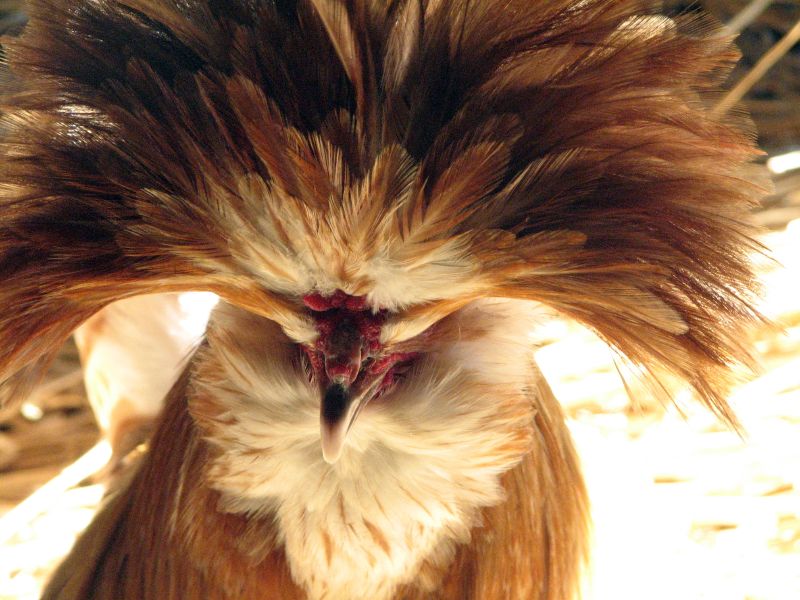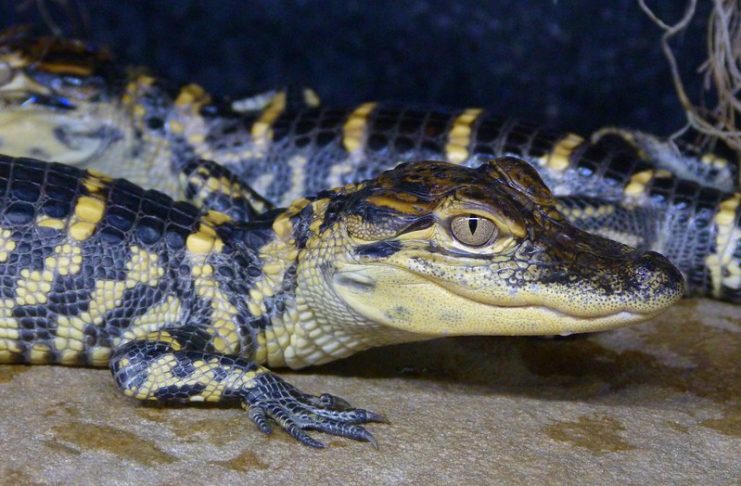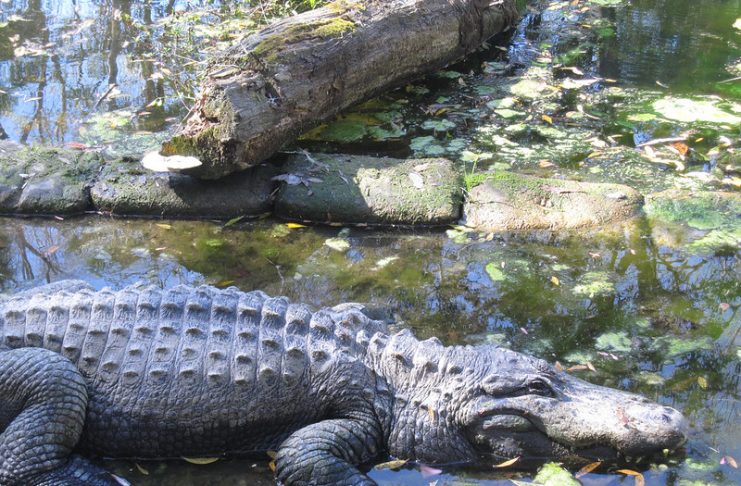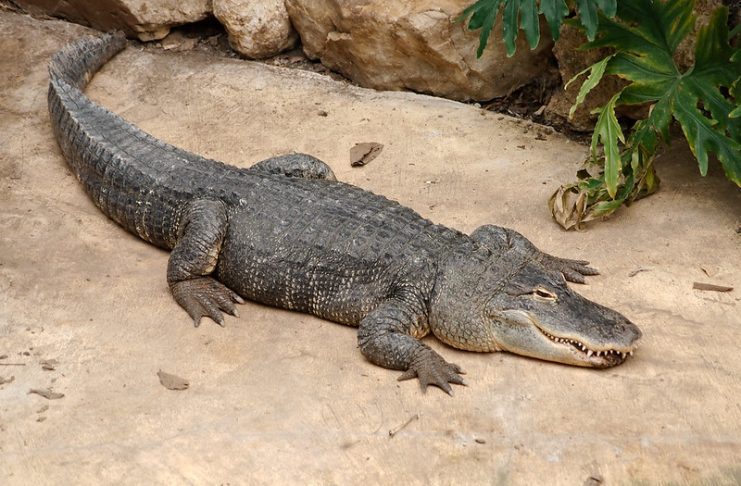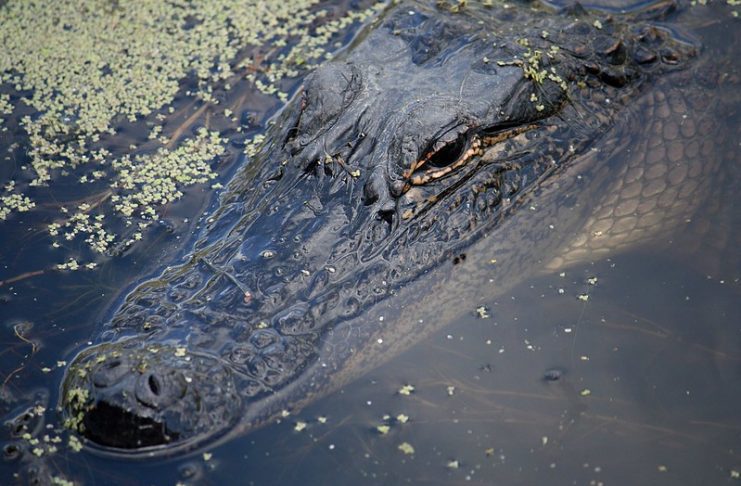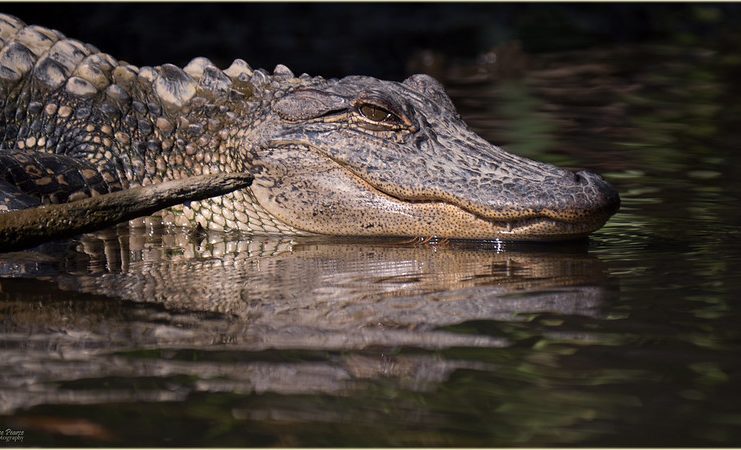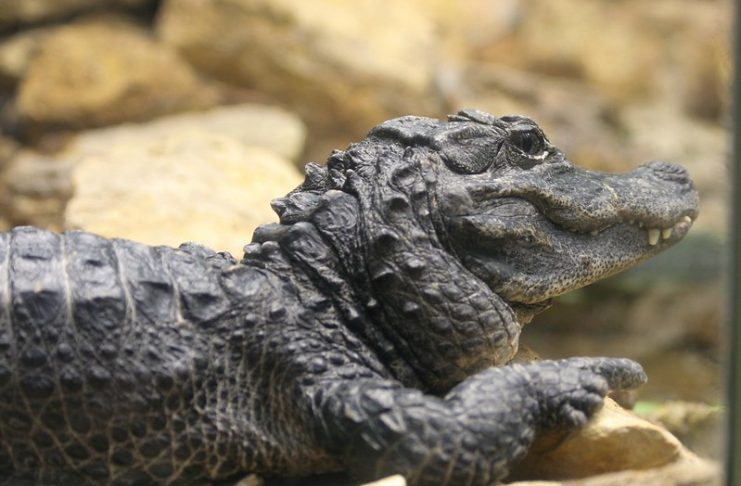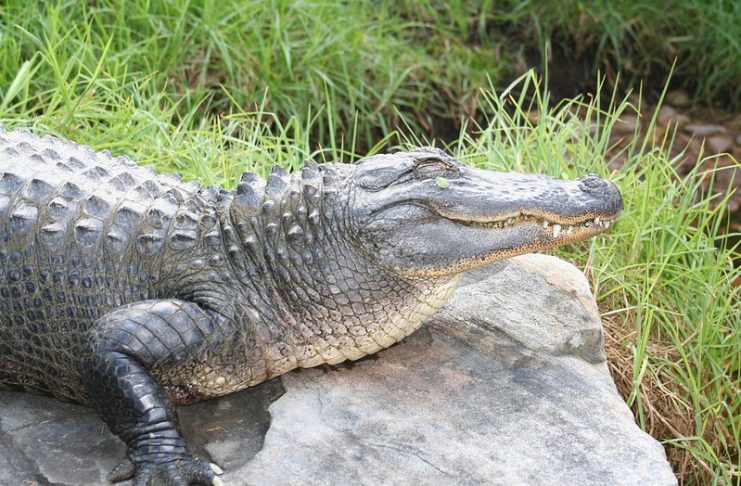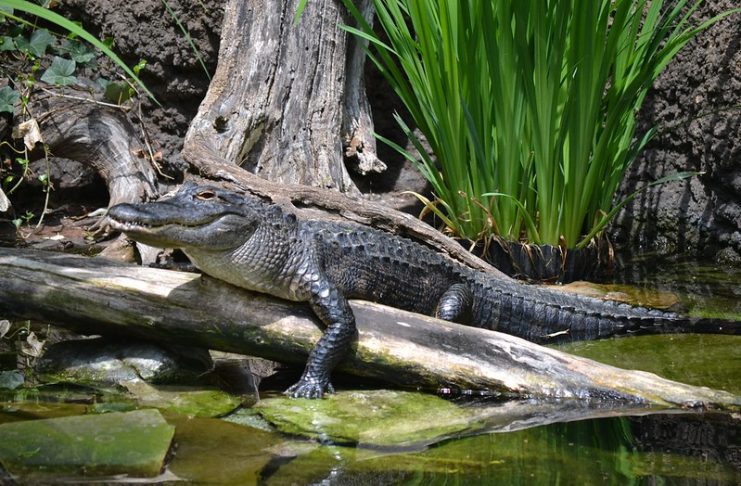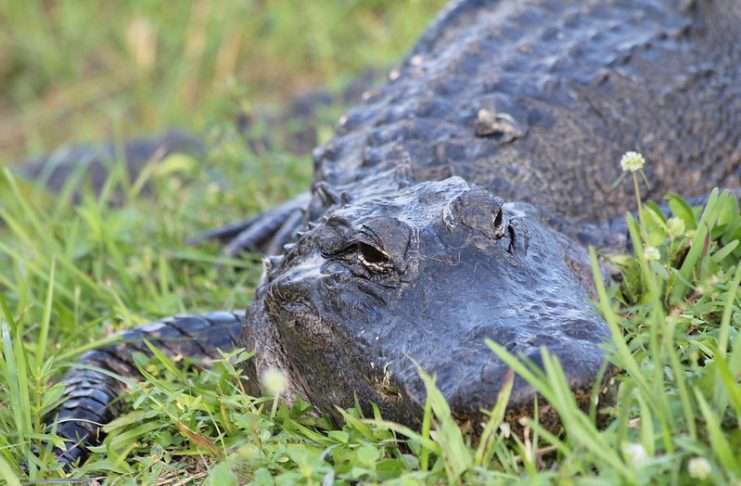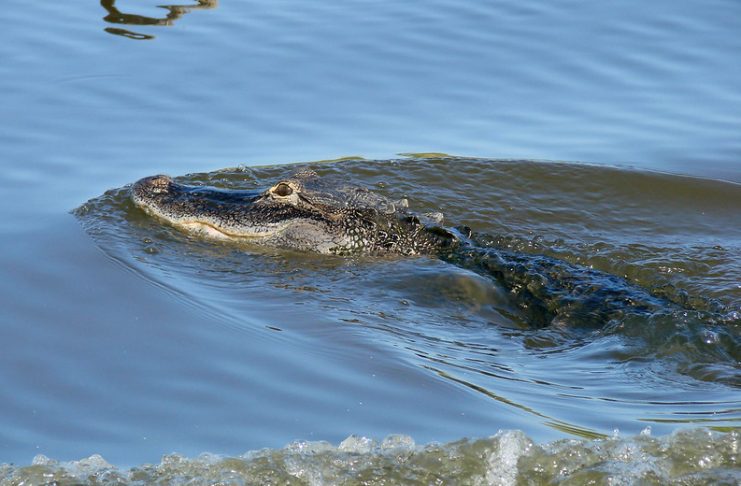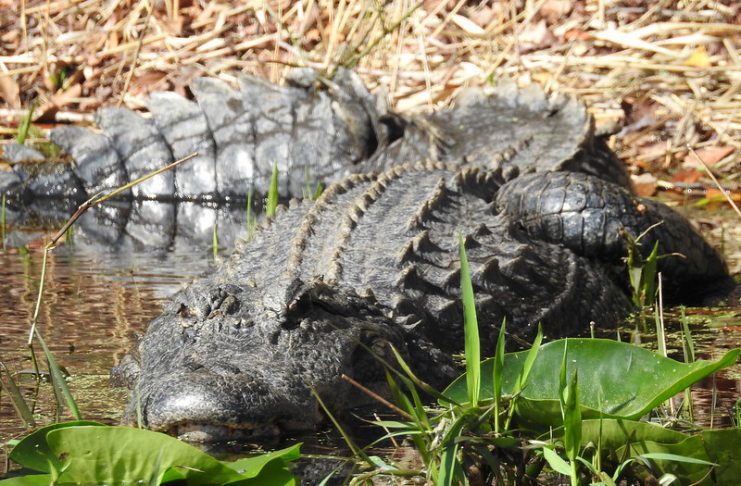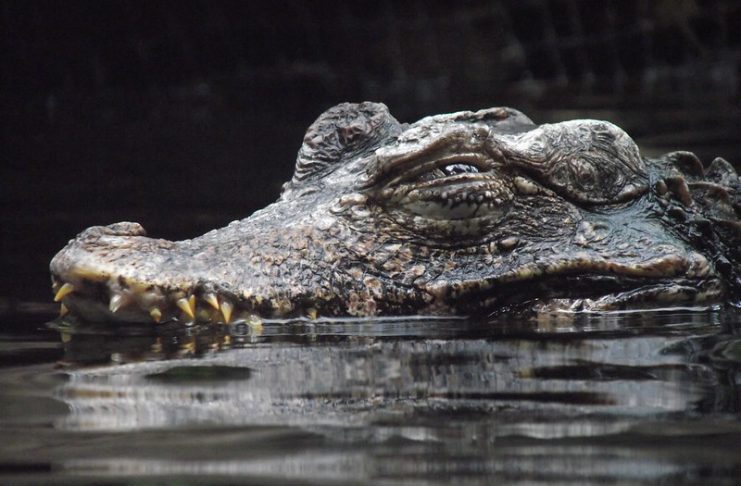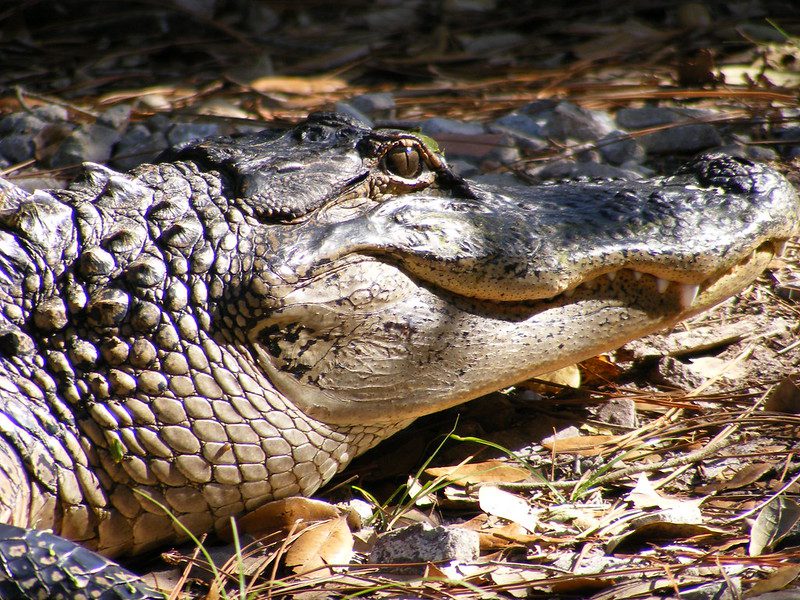
What Do Alligators Look Like?
Alligators are large reptiles with long, muscular tails and bodies that taper at the waist. They have short, stocky legs with webbed feet and sharp claws. Alligators have tough, leathery skin that is covered in small scales. The color of an alligator’s skin can range from dark green to black.
Adult alligators can grow to be 15 feet long and weigh up to 1,000 pounds. The biggest alligator ever recorded was 19 feet 2 inches long! Alligators have very powerful jaws that can exert a force of 2,980 pounds per square inch. That’s enough force to crush a human skull!
Alligators have been around for a long time, and they aren’t going anywhere. These impressive creatures have survived for millions of years and are now one of the top predators in the United States.
If you’re lucky enough to see an alligator in the wild, you’ll be able to tell them apart from other reptiles by their broad head, thick body, and short legs. Alligators are also good swimmers and can hold their breath for up to an hour underwater.
While alligators may look scary, they usually only attack humans if they feel threatened. If you see an alligator in the wild, it’s best to leave it alone and give it space. Alligators are an important part of the ecosystem and play a vital role in keeping the population of other animals in check.
Alligator Scientific Name
Behavior
Wildlife experts say that the best way to avoid an encounter with an alligator is to be aware of their behavior and habitat. Alligators are most active in the spring and summer when they are looking for a mate. They will often sun themselves on the banks of ponds and lakes during this time.
During the fall and winter, alligators will spend most of their time in the water where it is warmer. They will be basking on logs or the shore to soak up the sun’s rays. Alligators are cold-blooded so they need the sun to help regulate their body temperature.
Alligators are shy by nature and will usually only attack if they feel threatened. If you see an alligator, it is best to give it space and not try to approach it.
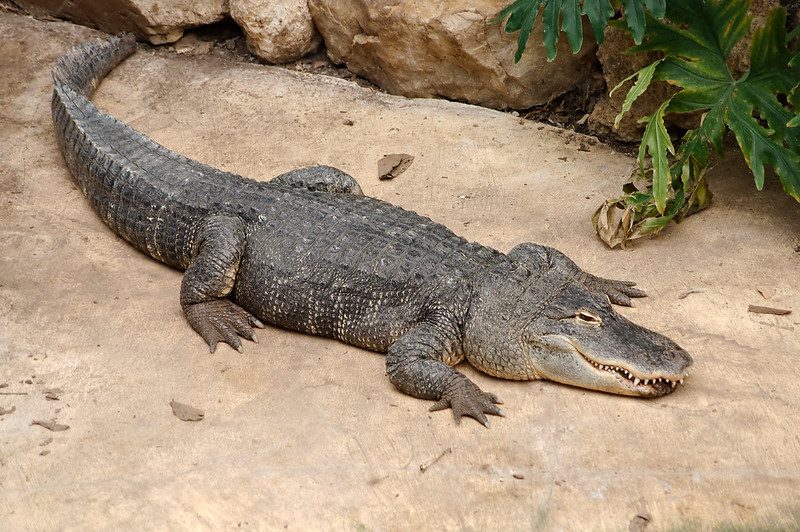
Reproduction Of The Alligator
Alligators are polygynous, meaning that males will mate with several females in a single season. Mating season for alligators begins in late April or early May. During this time, male alligators will bellow to announce their presence and call out for mates. Females will respond with a similar vocalization, which allows the two to find each other.
Once they have found each other, the male and female will engage in what is known as a “mating dance”. This dance involves the two alligators circling each other and rubbing their bodies together. After this is complete, the female will allow the male to mount her and they will begin copulation.
Copulation lasts for about 45 minutes, after which the two alligators will go their separate ways.
When Is The Breeding season?
The American alligator breeding season takes place in the spring. The male alligators will bellow to announce their presence and to attract a mate. The female alligators will build a nest of vegetation, which can be up to 6 feet high and 20 feet wide. She will then lay anywhere from 20 to 50 eggs. After about two months, the eggs will hatch and the baby alligators will make their way into the water.
Nests are built primarily by the female using vegetation, mud, and leaves. She will often construct several false nests before finally settling on one to lay her eggs in. She will remain close to the nest during incubation, which takes about 65 days.
Young Alligators & Juveniles
A female can lay up to 90 eggs in her nest, which she then covers with more vegetation. To let their mother know they’re ready to hatch, the young alligators make a high-pitched noise from inside their eggs.
Eggs hatch are incubating for roughly 65 days. Many young alligators are eaten by predators such as birds, snakes, fish, and mammals, but are usually safe after they reach four feet (1.2 meters) long.
Juveniles primarily eat invertebrates, such as insects, crustaceans and snails. As they grow older, alligators begin to include fish, frogs, turtles and small mammals in their diet.
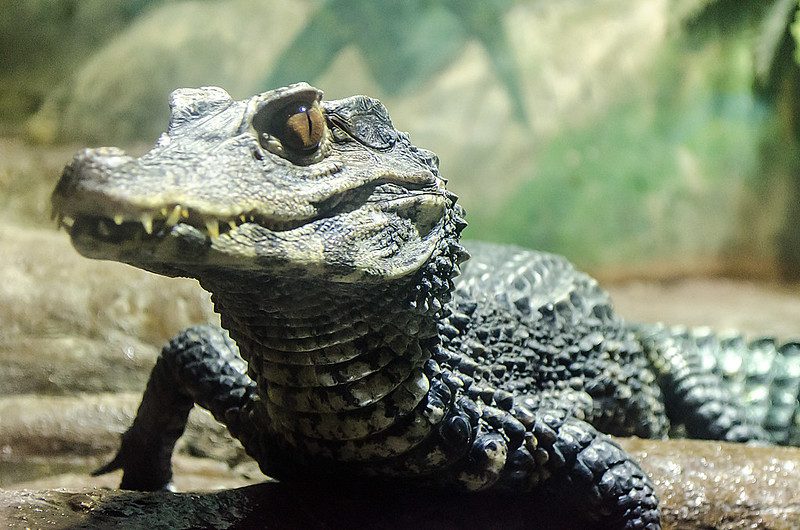
Baby alligator nests
When the baby alligator hatches it measures about 6 to 8 inches (15 to 20 centimeters). Newly hatched alligators live in small groups, called “pods.” Some 80 percent of young alligators fall victim to predators such as birds, raccoons, bobcats, otters, snakes, large bass and larger alligators.
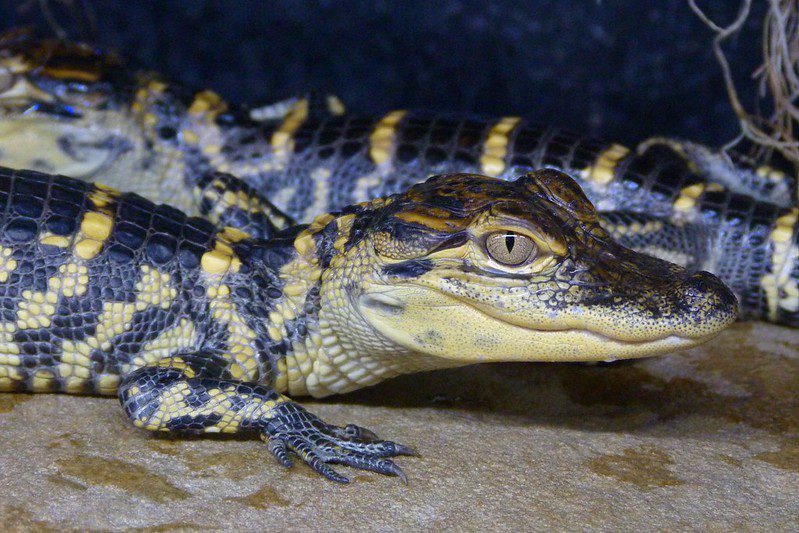
Evolution Of The American Alligator
The American alligator has been around for millions of years and is one of the oldest species on earth. These reptiles first appeared during the Oligocene epoch which began about 33.9 million years ago.
New research shows that American alligators have been virtually unaffected by evolution for at least 8,000,000 years, which is up to 6,000,000 years longer than previously believed.
You could see the same animal crawling around 8 million years ago if you could go back in time. They looked the same 30 million years ago. The alligator is a survivor. It can withstand extreme climate changes and sea-level fluctuations that could have caused other less adaptive animals to change rapidly or become extinct.
The gators that we see today don’t really compete with anything. But millions of years ago, it wasn’t just competing with another type, but also with a larger one. Although the Florida ancient crocodile may have helped to keep alligators in freshwater habitats it seems that alligators have always preferred freshwater.
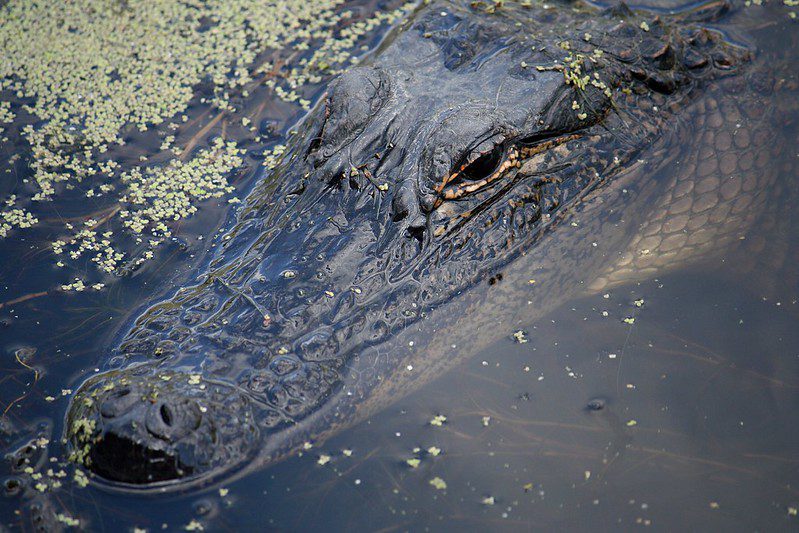
Alligator diet and prey
The American alligator is an opportunistic feeder. Its diet consists of fish, reptiles, mammals, and birds. It also feeds on carrion and other invertebrates. Alligators are most active at night when they hunt for their prey.
Alligators prefer to eat fish that are 6 to 10 inches in length. However, they will eat any size fish they can catch. Their diet also includes frogs, turtles, snakes, and small mammals such as rodents and rabbits. Alligators will also eat carrion if they find it. Invertebrates such as crayfish, insects, and mollusks make up a small part of the alligator’s diet.
Alligator Interesting Facts and Features
- Alligators have been around for a long time – about 37 million years! Here are some interesting facts and features about these fascinating creatures:
- Alligators are found in the southeastern United States, in swamps, marshes and rivers.
- Adult alligators can grow to be up to 15 feet long and weigh over 1,000 pounds!
- Alligators are carnivores – they eat fish, reptiles, birds and mammals.
- Alligators have very tough skin that is covered with scales. This helps protect them from predators and their prey.
- Alligators are excellent swimmers and can hold their breath underwater for up to an hour!
- When alligators feel threatened, they will open their mouths wide to show their teeth as a warning. If that doesn’t work, they will attack!
Alligator classification and evolution
Alligators are members of the order Crocodilia, which also includes caimans, gharials, and crocodiles. Alligators and crocodiles are further distinguished by their different diets, habitats, and skull shapes.
Alligators are native to the United States and China. In the United States, alligators are found in the southeast from North Carolina to Texas. There are two species of alligator: the American alligator and the Chinese alligator (Alligator sinensis).
The American alligator is much larger than the Chinese alligator and can grow up to 20 feet in length. The Chinese alligator is endangered and only found in a few isolated wetlands in China.
Alligators are ectothermic animals, meaning they rely on external sources of heat to regulate their body temperature.
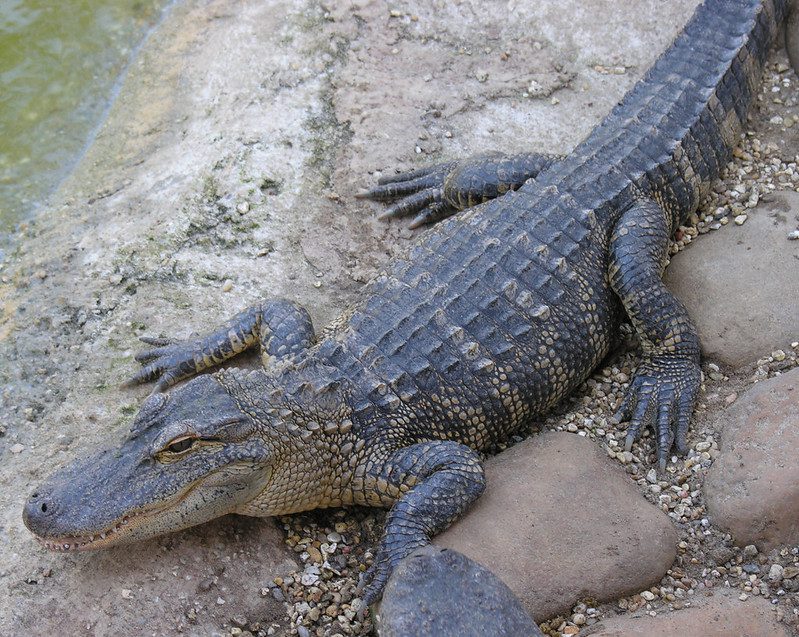
Alligator distribution and habitat & Location
The American Alligator location is endemic to the South-East USA and covers the entire Florida and Louisiana state as well as the southern parts of Georgia, Alabama, and Mississippi. Most American alligator populations are located between Florida and Louisiana and over 1 million of these animals are thought to exist.
American alligators are found in freshwater environments including streams, lakes and swamps. It’s the only area in the United States in which alligators and crocodilians live together.
Alligator relationship with humans
Alligators have been a part of human culture for centuries, appearing in folklore, art, and literature. These large reptiles can grow up to 20 feet long and weigh over 1,000 pounds. While alligators may seem intimidating, they are actually shy creatures that avoid contact with humans.
Alligators play an important role in the ecosystem by controlling the populations of prey animals. They help keep wetlands healthy by eating sick and injured animals. Alligators also play a key role in the tourism industry, bringing millions of dollars into the economy each year.
While alligator attacks on humans are rare, they do occur. It is important to be cautious around alligators and never try to feed them. If you see an alligator in the wild, enjoy observing it from a safe distance.
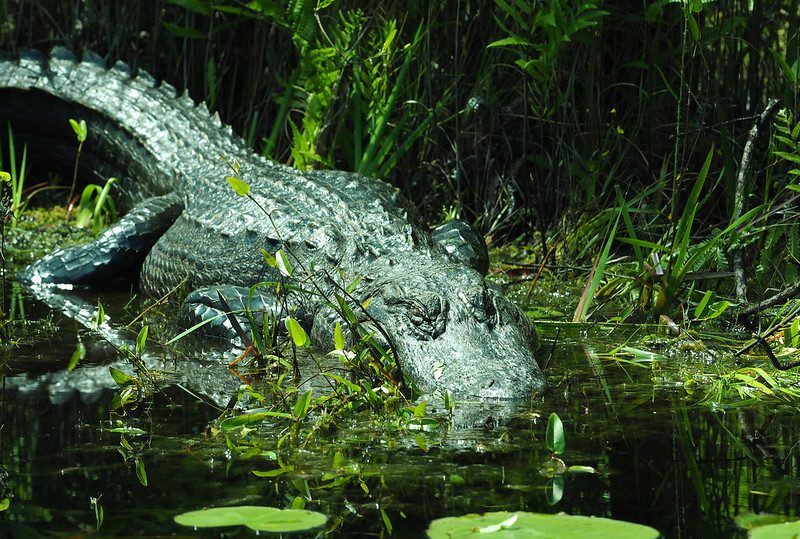
Alligator Predators and Threats
The American alligator is a large crocodilian reptile native to the southeastern United States. The American alligator is found in North America from the Florida Everglades to parts of Texas and Louisiana.
Alligators are apex predators and consume fish, amphibians, reptiles, mammals, and birds. Common prey items include smaller alligators, turtles, snakes, frogs, and mammals such as Raccoons or nutria.
Adult alligators will also consume carrion. Larger prey items are typically consumed headfirst to facilitate swallowing. Alligators have been known to attack humans but typically only do so out of self-defense or territoriality.
Alligators face many threats including habitat loss and fragmentation due to wetland drainage and conversion for agriculture or urban development.
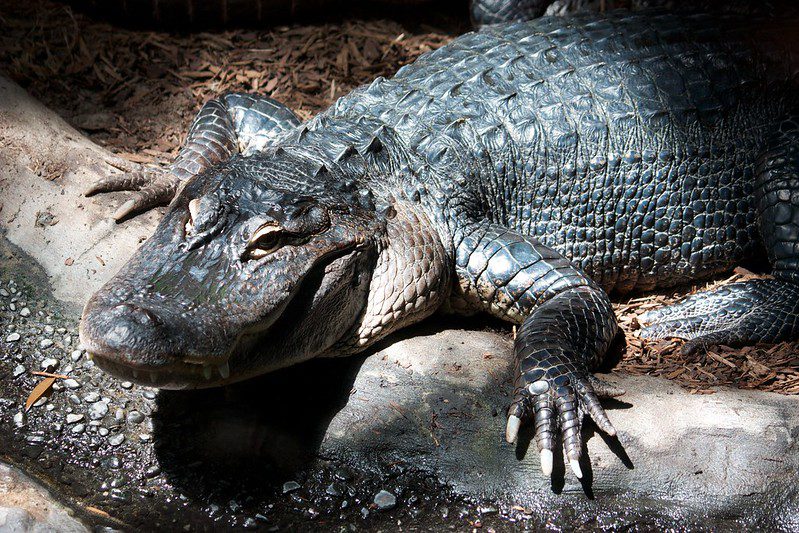
Alligator Conservation Status and Life Today
Alligators are considered an endangered species, but due to habitat protection laws, they are now very well recovered and there are over a million alligators that are still found throughout the U.S. Today. They have however become increasingly contaminated by deforestation and polluting water.
Human uses
Alligators are endangered due to habitat loss and hunting. They were once hunted for their skin which was used to make clothing and other products. Alligator meat is also considered a delicacy in some cultures. Conservation efforts have helped to stabilize the population of American alligators.
Prehistoric Characteristics
Prehistoric characteristics are found in alligators that date back to the Early Cretaceous Period. These include a large, robust body; a short, thick tail; and short legs. Alligators also have well-developed eyesight and hearing, which helps them locate prey. Their skin is tough and scaly, providing protection from predators and the elements.
Differences from crocodile’s
Crocodiles and adult alligators are often mistaken for one another. Both are large, semi-aquatic reptiles with long snouts full of sharp teeth. But there are several key differences between these two species.
For one, alligators are native to only two countries: The United States and China. Crocodiles, on the other hand, can be found throughout the tropics in Africa, Asia, Australia, and the Americas. Alligators have a U-shaped snout and are found in freshwater environments. Crocodiles, on the other hand, have V-shaped snouts and can be found living both in fresh water and salt water.
American crocodiles
The American crocodile is found in the southeastern United States, including eastern Texas. These reptiles can grow to be 15 feet long and weigh up to 1,000 pounds. Crocodiles are predators, and their diet includes fish, turtles, small mammals, and birds.
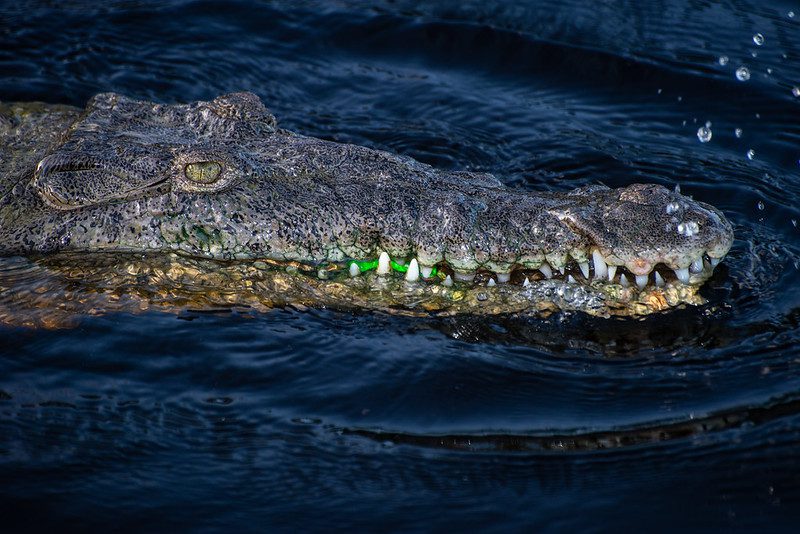
Crocodiles are shy and reclusive animals. They spend most of their time in the water, but they can also be found basking on the banks of rivers and lakes. When they are threatened, crocodiles can attack with their powerful jaws and sharp teeth.
While crocodiles are not considered endangered, their populations have declined in recent years due to habitat loss and hunting.
Chinese Vs American Alligator
Chinese alligators are a species of alligator found only in China. They are much smaller than their American cousins, reaching a maximum length of just over 6 feet. These Alligators are also generally darker in color, with a more drab brownish-gray hue. These animals are critically endangered, with an estimated 100-200 individuals remaining in the wild.
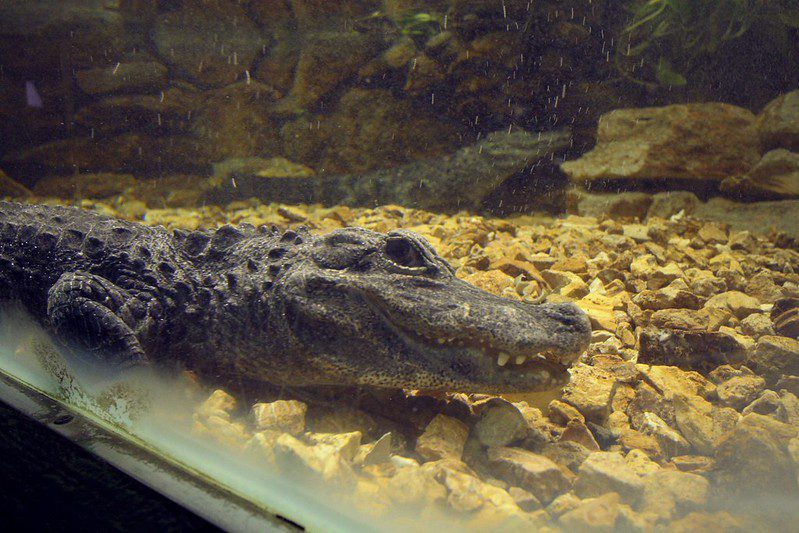
The American Alligator is found throughout the southeastern United States, from North Carolina to Florida and west to Texas. They can grow to be much larger than their counterparts, with some males reaching lengths of over 20 feet!
American Alligators are typically dark olive green in color, with a white or light gray underside. Though they were once endangered, their population has rebounded and they are now classified as “Least Concern” by the IUCN.
Is an alligator a reptile or animal?
Alligators are large reptiles that belong to the order Crocodylia. People often confuse the two species of alligators that exist and the many species of crocodiles around the world. The distinctive features of an alligator are its long, round nose and black color.
Despite these differences, alligators are still often considered reptiles. This is because they share many characteristics with other reptiles, such as having dry, scaly skin, laying eggs, and being cold-blooded. However, there are some key ways in which alligators differ from other reptiles.
For example, alligators are able to regulate their own body temperature, whereas other reptiles cannot. Additionally, alligators care for their young for a longer period of time than other reptiles do.
What is the scientific name for alligators?
Alligators are a species of crocodilian that can be found in the southeastern United States. The scientific name for alligators is Alligator mississippiensis.
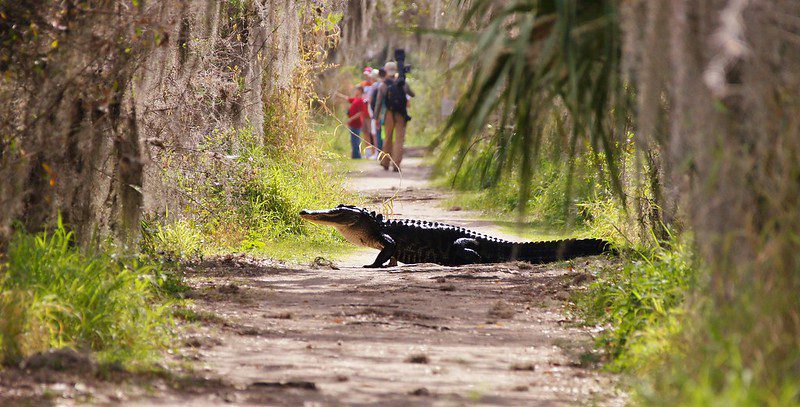
How did the American alligator get its name?
Wild alligators are large reptile that is found in the southeastern United States. It is closely related to the endangered American crocodile. The alligator gets its name from the Spanish word “alligator”.
The word “alligator” comes from the Latin word “alexandrinus”, which means “lizard”. The American alligator was once on the brink of extinction due to hunting and habitat loss. However, conservation efforts have helped to increase its population. Today, the American alligator is a common sight in many parts of its range.
Where do most alligators live in the US?
Alligators are found in the Southeastern United States, from North Carolina to Florida and west to Texas. They are also found in parts of Louisiana, Georgia, Alabama, South Carolina, Mississippi, and Arkansas. There are two species of alligator found in the US – the alligator (Alligator mississippiensis) and the smaller Chinese alligator (Alligator sinensis).
How many eggs does an alligator have?
Female alligators lay an average of 35 eggs per clutch but can lay up to 62 eggs. The number of eggs laid is affected by the size of the female alligator. Larger females will lay more eggs than smaller females. Alligators incubate their eggs for about 60 days before they hatch.








































